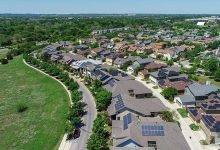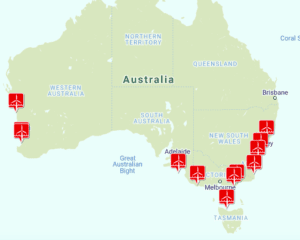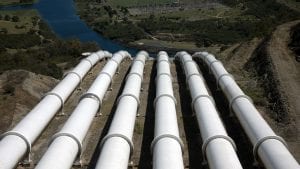Falling technology prices and high electricity costs helped Australia’s solar industry rise to new records in 2019, according to new analysis, capping off a decade which saw Australian solar capacity grow by almost 100-fold in just ten years.
A report published by the Australian Photovoltaics Institute (APVI) has detailed the stunning rise of the Australian solar market, which went from having the status of a cottage industry to a multi-billion dollar market that is fundamentally reshaping the way Australians interact with their energy use.
The PV in Australia report for 2019 also details how Australian solar capacity grew by almost 100-fold over the last decade, with rising electricity prices and falling solar costs leading to around 2.5 million households and small-businesses switching to solar.
APVI said that 2019 saw installation records broken across each of the residential, commercial and large-scale solar market segments, seeing Australia retain its status as a leading adopter of solar energy, a technology pioneered by Australian researchers.
“There has been phenomenal growth across the board in the solar industry in Australia, making our country a world leader both in capacity for solar energy production, and a key centre for solar research,” APVI secretary Renate Egan says.
Early growth in solar uptake in Australia was primarily driven by rooftop solar installations for homes and businesses, supported by early rebate and feed-in-tariff policies. But in recent years, that growth has been joined by a surging rise of utility scale solar projects.
Over the last two years, Australia more than doubled the amount of installed solar capacity, jumping from less than 8GW of total solar capacity in 2017 to 16.3GW of operating solar projects by the end of 2019.
Australia now boasts 372 large-scale solar power plants, which represents huge growth in the larger end of the market given there were virtually no large-scale solar projects in Australia a decade ago.
APVI points to the fact that just 187MW of solar capacity had been installed in total by the end of 2009, which is comparable to the amount of rooftop solar capacity that is now installed in a single month in Australia.
The solar industry now employs more than 17,800 Australians in full-time equivalent jobs, with an additional 550 Australian researchers working on solar energy technologies. APVI estimates that the total value of solar businesses in Australia has reached $7.6 billion.
According to the APVI assessment, total installed solar in Australia reached 16.3GW by the end of 2019, representing an almost 100-fold increase in solar capacity over the last ten years. Australia continues to lead the world in the amount of operating solar capacity per capita, with 650 watts per person.
This beats out second place Germany, another country recognised as a leading adopter of solar power, which has 580 watts per person of installed solar.
With an additional 4.76GW of new solar capacity additions were undertaken in 2019, a new annual record, Australia ranks amongst the top five markets globally according to APVI, underpinning the level to which Australians have embraced solar.
These records have been underpinned by falling costs for solar panels. According to the APVI report, the average cost per watt for a solar panel in 2006 was around $8.50 per watt. By 2019, this cost had fallen to just $0.52 per watt, a dramatic fall in price achieved through a massive ramp-up in global production capacity and improvements in manufacturing.
Residential solar uptake has been highest in Queensland and South Australia, which have achieved an average rooftop solar penetration above 37 per cent, with APVI noting that some parts of both states have achieved solar penetration above 50 per cent.
Uptake has also benefited through a shift to larger systems. Falling installation costs have seen average rooftop solar installation sizes grew to 7.1kW, which is significantly higher than an average system size below 1.5kW installed in 2009.
The most recent quarterly carbon market update published by the Clean Energy Regulator suggests that a new record for rooftop solar installations could be set in 2020, with the regulator forecasting 2.9GW of capacity to be installed this year, but there is likely to be a retraction in large-scale solar projects, as the market heads into a tricky post-RET market and continues to battle with network connection issues.











